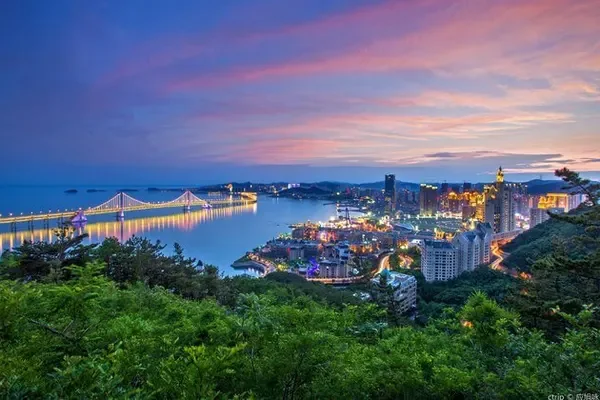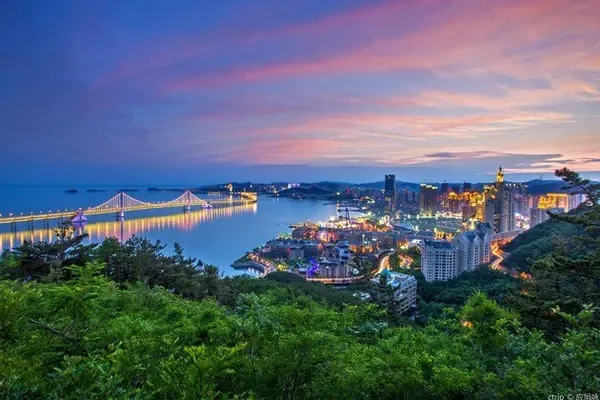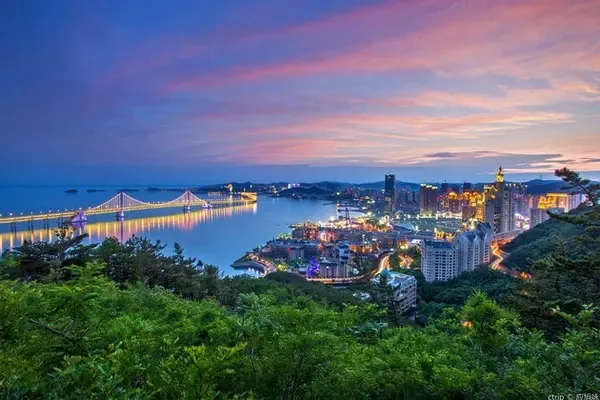Beijing weather: sunny
With whom: friends
Accommodation: The Weiming 4th room is very good, with a small bourgeoisie and accent, good service, thoughtful, clean, suitable for business or solo travel, located in Beijing's characteristic alley, adjacent to Houhai, very convenient for running in the morning, and a bar at night Very lively and fashionable.
Courtyard Hotel



Things outside of Beijing are a matter of one person's application
I haven't seen the emperor's residence, but I know the emperor is respected.
What you can visit in the Forbidden City is far more than the Jiuzhong City Tower and the rare treasures. Over time, the four seasons change, and they all have different styles. Flowers and trees, spring rain and winter snow, all have moving legends.
Spring is the best time to enjoy flowers in the Forbidden City. From early April to mid-May, lilacs and crabapples are in full bloom, and the red walls and yellow tiles set off each other. There are intoxicating scenery everywhere. Even if you only have a mobile phone, even if you are a handicapped photographer, you can take a big picture with your hands.
During the Ching Ming Festival holiday, I personally tested the begonia viewing route issued by the Forbidden City. I can not only see the flowers, but also avoid the crowds on the central axis. I would like to share with you. The specific roadmap is as follows:

entrance gate
The entry and exit of Tianziju is also very particular. If you don't plan in advance, you may take more unexpected routes.
The Forbidden City can only be entered from the Meridian Gate (North Gate), and the Shenwu Gate is generally used to exit. Of course, the East and West Huamen Gates can also be exited. It mainly depends on everyone's arrangements after visiting the Forbidden City. Wangfujing is 15 minutes away from Donghuamen, and Jingshan is just across the road from Shenwumen. As for the Xihua Gate, haha, it seems that no one would choose to go out from the Xihua Gate. After all, there are no attractions to see in the direction of Zhongnanhai.
Because the light is good in spring, my plan is to go to the top of Jingshan Mountain to see the panoramic view of the Forbidden City after watching the flowers. I chose the general route of entering the Meridian Gate and exiting the Shenwu Gate.
Most people who go to the Meridian Gate may choose to get off the subway at Tiananmen West/East, go through the security check to enter Tiananmen Square, and go south along the central axis to the Meridian Gate to enter the Forbidden City. Of course, if you don’t want to go to Tiananmen Square, you can also take the No. 82 bus to Donghuamen, and then take a battery car to the vicinity of Meridian Gate.
Yanchi Tower
After entering the Meridian Gate, go east (turn right), climb up the Yanchi Tower on the east side, pass the turret and go down to Donghuamen. In addition, there is a special exhibition of Mr. Shan Shiyuan on the east corner building, so I suggest you take a look first.
Since the completion of the restoration of the Yanchi Building in the Forbidden City, numerous exhibitions have been held, including last year's popular Maritime Silk Road Exhibition, and the Thousand Miles of Rivers and Mountains Exhibition, etc., which have become the new favorites of Internet celebrities. Standing on the Yanchi Building, no matter overlooking the Forbidden City or overlooking the central axis, you can have a sense of mastery of the magnificent scenery of the country.

Forbidden City Corner Tower Donghuamen-Wenhuadian
Down from the turret, passing through the Donghua Gate to the west is the Wenhua Palace. The begonia in front of the Wenhua Gate of the Forbidden City is the largest. It is said that it was planted during the Guangxu period of the Qing Dynasty, and it has a history of a hundred years. It's a pity that when I went there, although the number of begonias in front of Wenhua Gate was considerable, most of them had not yet bloomed. Although budding and waiting to be released have a unique style, most people still like to appreciate the magnificent scenery, so the best viewing time is near the middle of April.
In addition, the Wenhua Hall is the Porcelain Hall of the Palace Museum, and the large vase of net red porcelain is in this hall.

Wenhua Hall of the Forbidden City

Wenhua Hall of the Forbidden City Martial Arts Hall
Last year, in the 60th anniversary of the Forbidden City, the theme exhibition of "Shiqu Baoji" with the theme of "Surfing the River During the Qingming Festival" was exhibited, which attracted people from all over the country to line up for the event overnight. As the Palace Museum's calligraphy, painting and classics hall, the Wuying Hall now has a commemorative exhibition of Mr. Zhang Boju who donated more than half of the collection of the Palace Museum.
The White Jade Bridge in front of the Hall of Martial Arts, with sparkling blue waves, surrounded by white and purple lilacs, is quiet and fragrant, and it is a sight not to be missed.

Palace of Martial Arts

Palace of Martial Arts, Palace of Compassion and Peace—Garden + Shoukang Palace
Everyone must know the Palace of Compassion and Peace, the palace of Lafayette Haha, but in fact, the tour of Palace of Compassion and Peace is divided into two parts, the back garden + the palace. I don't know why the door to the back garden has been closed. To go to the back garden, you can only enter through a very narrow door on the right side of the gate, and the same goes out.
The flower season in spring can be said to be the most important thing in the Palace of Compassion and Peace. Not only is there no extremely crowded crowd, lilacs and crabapples are in full bloom, and white bark pine and ginkgo trees are all ancient trees. At the end of April, the Peony Exhibition is also here, and it is a place that flower lovers cannot bypass when they come to the Forbidden City!

The Palace of Compassion and Ninggong Garden

The Palace of Compassion and Ninggong Garden

The Palace of Compassion and Ninggong Garden
Get out of the small door of the Palace of Compassion and Peace. If you don’t plan to go to the main hall of the Palace of Compassion and Peace to see the sculpture gallery, you can go through the small door opposite, which is the Shoukang Palace. In the Shoukang Palace, there is a deep love between Qianlong and his mother, the Empress Dowager Chongqing (hahaha is Huanhuan), but our focus is on the two flourishing white lilacs in front of the Shoukang Palace.
After coming out of Shoukang Palace, you could have walked westward and returned to the central axis, and walked straight along the alley (Yongxiang) through the small gate on the left side of Qianqing Gate (that is, the Xianhe right gate) on the right side of the military plane. Behind the Hall of Mental Cultivation is Yongshou Palace. But, when I went to Qingming Festival, the door to the central axis of the Palace of Compassion and Ning was closed, and there was a question mark on my face for some reason. At this time, after coming out of the Palace of Compassion and Ning, walk along the narrow road outside the gate of the Palace of Compassion and Ning, pass a cultural and creative product store of the Forbidden City, go straight south, turn right at the end, and go straight to see " The publicity board of the "Tianlu Yongshou" exhibition is Yongshou Palace. (If you don’t understand the narrative, you can read the first roadmap)
PS. Tianlu Yongshou is an exhibition with the theme of "deer" held by the Forbidden City last year. It was okay. Chengde, Hebei borrowed a few sika deer and put them in the garden of the Palace of Compassion. Unfortunately, the deer has been returned. The exhibition of Yongshou Palace is still exist.
Yongshou Palace
Yongshou Palace is also a must-see place to watch Haitang. This palace is the closest to the Emperor's Hall of Mental Cultivation, and was once the residence of Concubine Dong E, the favorite concubine of Emperor Shunzhi. Unlike the flowering begonias in the Wenhua Palace and the Garden of Compassion Ninggong, there are actually two begonias in front of the Yongshou Palace, but their luxuriant branches and leaves and beautiful colors are far superior to others. In addition, these two begonias were also planted in the Qing Dynasty.

Forbidden City Yongshou Palace

Forbidden City Yongshou Palace

Forbidden City Yongshou Palace
I used to like a line of poem "The begonia is not stained with rouge, and stands alone in the drizzle." Now I understand that the begonia in this poem is a begonia in the late flowering period, from the deep pink flower bone to the color of the fans when it blooms. white twilight. No wonder poets always like to use crabapple as a metaphor for beauties whose backgrounds have been lost. They can change the color of flowers from deep to light, from red to white, so how can people not feel pity.
After leaving the Yongshou Palace, go through the palace gates to the east, walk back to the Jiaotai Palace on the central axis, and then go east to the Yongxiang where the East Sixth Palace is located, and go back (to the north) to the vicinity of the Qianqing Gate , you can see the entrances of the Treasure Hall and the Clock Hall.
PS. In the East Liugong Yongxiang, I encountered a large army of Qingming Festival tour groups, and it took a lot of effort to get out. So let’s enjoy the flower army, don’t waste any time on the central axis, anyway, you must have been to several halls~
Treasure Hall—Yihexuan
How should I put it, the flowers of Guhuaxuan and Yihexuan in the tour route of the Treasure Museum are actually far inferior to the four palaces mentioned above. And you know, the Treasure Hall will cost an extra 10 yuan. If you have already visited the treasures in the Treasure Hall, you can decide whether to go or not.
If you don't go to the Treasure Hall, you will go south after Yongshou Palace and you will be the Imperial Garden, and you will be the Shenwumen after you go out of the Imperial Garden.
Both Guhuaxuan and Yihexuan are located in the north of the Treasure Hall, after passing the Changyin Pavilion of the Grand Theater Building. (Changyin Pavilion has almost been repaired, just waiting for when to sit in the pavilion and listen to the opera!)

Forbidden City Yihexuan

Forbidden City Yihexuan
After leaving Yihexuan, you can see Zhenfei Well, and after passing Zhenfei Well, you will almost reach Shenwu Gate. You can also climb the Yanchi Tower on the Shenwu Gate, remember to return the commentator here.
Shenwumen can also enter the Imperial Garden to have a look, but there are no lilacs and crabapples in the Imperial Garden, the purple and white magnolias are almost in bloom, and there are still a few elm plums in bloom, and there are too many people, I am really not in the mood It is not recommended to go for pure flower appreciation.
In addition, when I was about to leave Shenwumen that day, it seemed that the president of a certain country was visiting the Forbidden City. The motorcades of that country were all piled up at Shenwumen, making it impossible to enter the Imperial Garden and Shenwumen. Between the Imperial Palace and the Imperial Garden, it’s really big~ Political leaders and so on, why don’t you come to visit in your own casual clothes~ But since President Shan took over the Forbidden City, foreign dignitaries are no longer allowed to drive in through the Meridian Gate, great! If you want to see the Forbidden City, get off the bus and walk!
Jingshan
Out of Shenwumen, it is the place where noisy tour groups and travel agencies live. Don't be fooled by the loudspeakers yelling about one-day tours to the Great Wall. It's better to take the underground passage to Jingshan across the road.
The Peony Festival in Jingshan is around the end of April. Although there are no peonies at this time, the elm leaves and plum blossoms are blooming well, and the tulips are barely blooming. It is also excellent to climb up to see the prospect of the Forbidden City in spring.

Jingshan Park

Jingshan Park
Finally, I wish you all a happy flower viewing. After all, spring is fleeting and precious.


